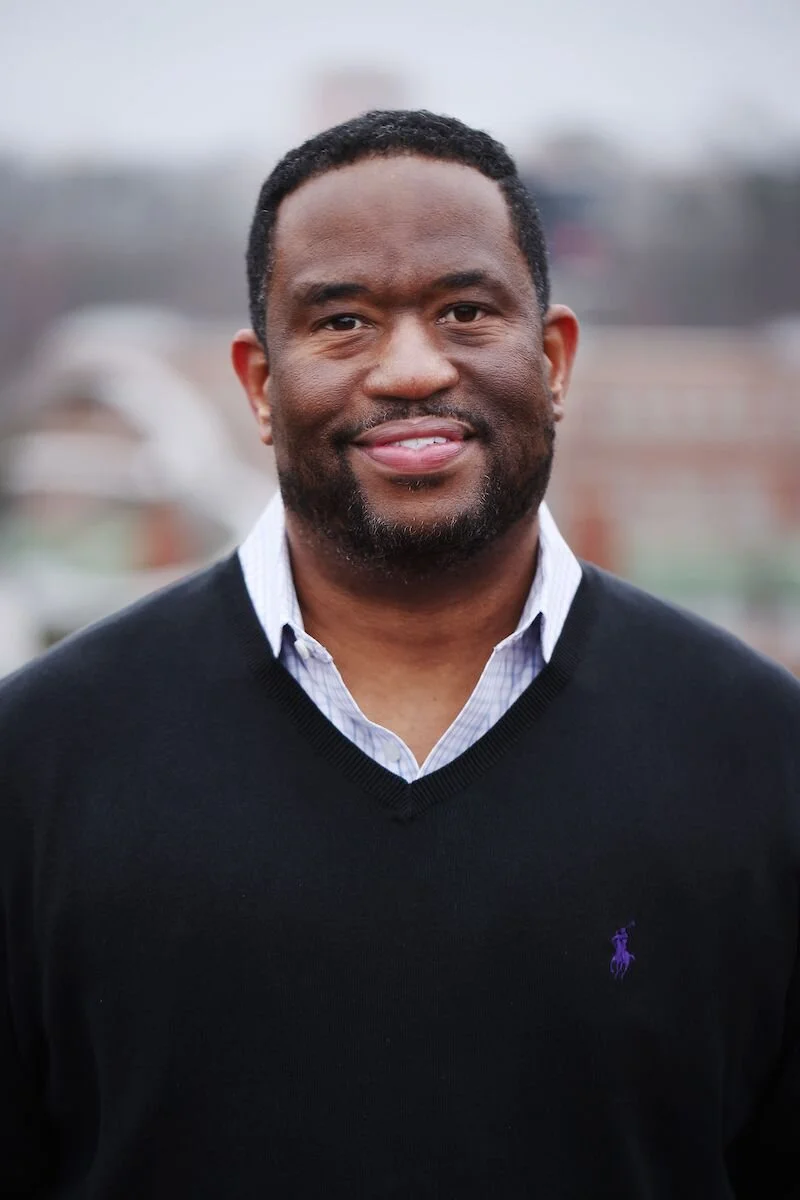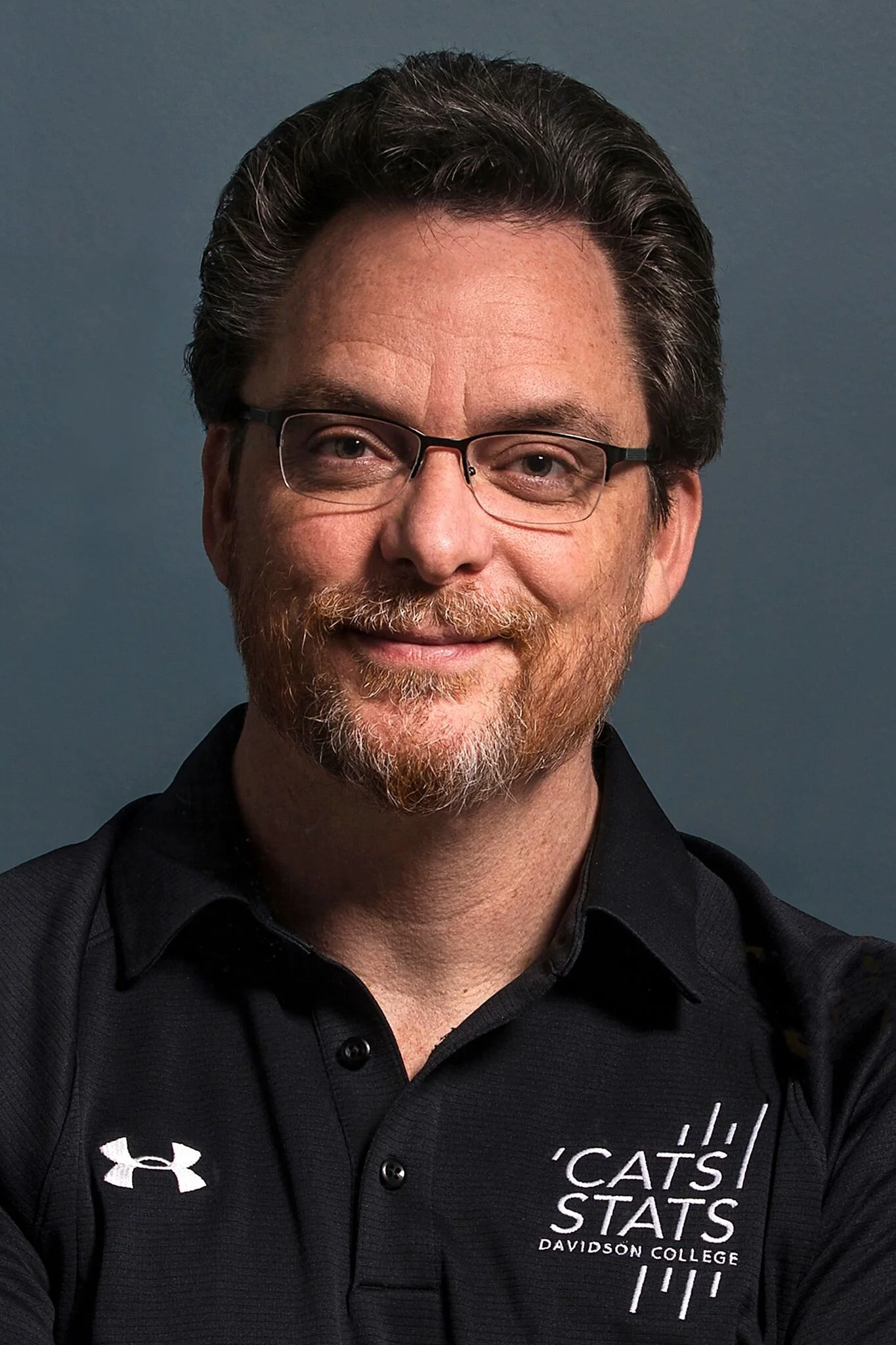Analytics for Live TV with John Tobias
John Tobias
By Tim Chartier @timchartier, Davidson College with John Tobias, Broadcast Statistician
Craving some math? Grab your remote and turn on a sports event! It’s likely that you’ll hear a stat mentioned by an announcer or see them pop onto the screen. Where do such insights come from? Who’s sifting through the numbers to find the insightful stat for the viewing fans? For more insight on these and more questions, we turn to John Tobias, a broadcast statistician and lecturer in the School of Data Science at the University of North Carolina at Charlotte.
Tim Chartier
Tobias has ten-plus years of experience in sports statistics and analytics. He was one of the first statisticians in the country to implement analytics in the sports television industry, also known as advanced statistics. He creates scripts for broadcasters to help explain to the viewers about sports analytics for the games they cover.
Tim Chartier: You work as a broadcast statistician. If we are watching a sporting event, help us envision what you are doing behind the camera.
John Tobias: Whenever there is a game being broadcast on TV or radio, no matter the sport, you will always have a play-by-play broadcaster and a color analyst. A TV statistician is always beside the play-by-play broadcaster feeding him/her information to convey to the viewing audience.
Tim Chartier: I imagine there is a certain amount of preparation on statistics that may be useful for a game. But, then there are also unexpected events of a game. Can you talk about how you approach getting ready for a game and also what you do to find relevant statistics as a game unfolds?
John Tobias: Generally the day before a televised game, there is a meeting with both coaches, the TV announcers, producer and director. When I attend those meetings, I get a good idea on what to look for from both teams. That, along with looking over game notes as well as speaking with the media relations representatives from both teams, gives me great preparation and foresight on the game that I'll be working.
Tim Chartier: To give us a sense of the breadth of your work, what sporting events have you covered?
John Tobias: In terms of sports would be football, basketball, baseball, soccer, volleyball, softball, and lacrosse. The biggest events that I've worked on have been the Summer Olympics and World Cup.
Tim Chartier: Suppose I want to offer analytics/stats to fans during a game. What principles should I follow that you’ve found most helpful?
John Tobias: 1) Be accurate. 2) Be timely. 3) Be interesting.
Tim Chartier: Why is each of these important in your work and how do they interrelate?
John Tobias: I say "be accurate" because if you're giving wrong information to the broadcasters, you're doing a disservice to them, the network, and the fans because your information is inaccurate.
I say "be timely" because let’s say if Steph Curry needs only two 3-pointers to become the all-time 3-point shooter in NBA history, and you don't realize this until after he's already made four 3-pointers. Well, that record was already broken several 3-pointers ago. Be timely.
"Be interesting" is my favorite because, again, my job as a TV statistician is to educate the audience either through the announcers or words on the TV screen. So, if I notice after the 3rd quarter that Steph Curry has made more 3-pointers in a game by himself than the entire opposing team as a whole, that lets the viewing audience know that 1) Steph is an exceptional outside shooter and 2) the opposing team is having a tough time guarding him. That educates and resonates with the viewer.
Tim Chartier: You’ve also been teaching sports analytics at University of North Carolina at Charlotte. If a student really wants to work in sports analytics, what should they learn and what tips do you have?
John Tobias: Two things stand out to me: 1) make sure you take a sports analytics class to learn the impact it has not just on team and player performance, but on contract negotiations, on salary cap, and even on sports betting. 2) I would also strongly suggest that students get an internship. There was a time that having a high GPA would give you a distinct advantage. Nowadays having experience prior to graduation is just as impactful as having a good GPA.
Tim Chartier: I have two follow-up questions. First, what’s your advice on finding internships?
John Tobias: As I may have mentioned before, the hardest part of getting a job in sports is getting your foot in the door. Many people simply quit in the early stages because the high amount of rejections can be deflating. Trust me, I know. Getting an internship greatly increases your chances because people like to hire people that they are already familiar with. That's true in any business industry.
There are good websites that post many internship opportunities. Teamworkonline.com and Workinsports.com are at the top of the list. I would also consistently look at team websites from the four major leagues in the United States.
Tim Chartier: Now for the other follow-up question: if a college doesn’t offer a sports analytics class, then what are the alternatives?
John Tobias: That's a tough question. In a perfect world, you should go to a college that offers sports analytics as either a major, minor, or as a class if you want to work in that field. But since we aren't in a perfect world, I would then suggest taking an online class. However, I don't think there are any online classes available at the moment. Wow, the light bulb just went off in my head to solve that problem by creating an online class to help fill that void!
Tim Chartier: You started a nonprofit in 2020. Can you describe why, its mission, and your vision for its future?
John Tobias: The name of the non-profit is Strength in Numbers, where we educate and teach sports analytics to underrepresented high-schoolers throughout the country. This is done by summer camps as well as by tools to help them provide analytical support to some of the sports at the high schools that they attend.
Even though the sports analytics industry is flourishing, only 13% of females hold sports analytics jobs, and for minorities it's only 9%. This all starts with awareness, meaning most underrepresented high schoolers that love sports have no idea that the sports analytics industry even exists. It all starts with awareness because awareness leads to opportunity.
Tim Chartier: Any final words for professors and students of mathematics?
John Tobias: The sports analytics industry is evolving everyday, so it's important that you also evolve and adapt. This goes for students as well as professors.
Tim Chartier is the Joseph R. Morton Professor of Mathematics and Computer Science at Davidson College. He’s grateful to walk through the uncertainties of life with his family and for their unwavering support and love.



